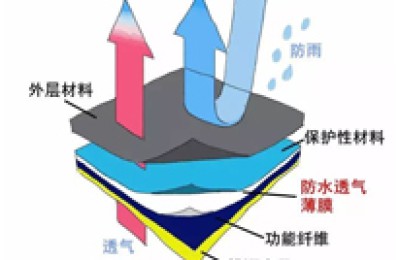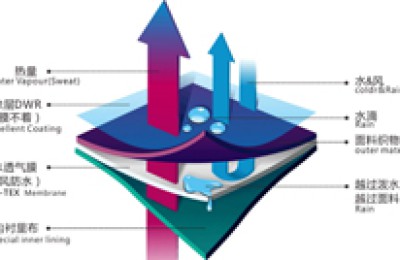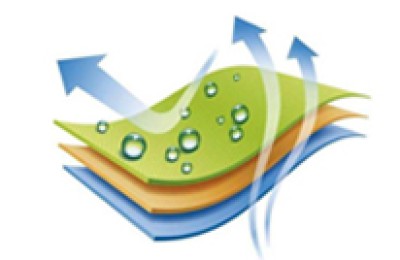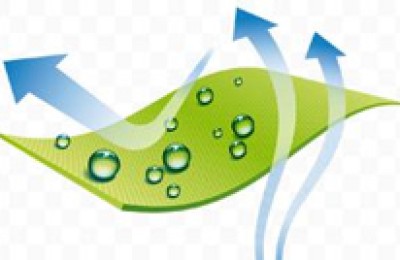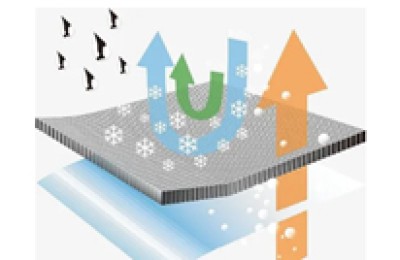The new round of cotton target price policy focuses on improving quality and “timely rain”
At present, cotton seedlings have begun to emerge in various parts of Xinjiang. The introduction of the cottontarget price policy has given cotton farmers who were busy sowing cotton some time ago a “reassurance”. The specific measures in the policy to ensure the basic income of cotton farmers and their enthusiasm for cotton planting are like a “timely rain”.
So, what are the key points of the country’s new round of cotton target price policy that need attention? What is its significance? With the implementation of the cotton target price policy, what are cotton farmers’ cotton planting intentions this year?
Target price remains unchanged and price management flexibility increases
“Not only Xinjiang cotton farmers, but also cotton practitioners have been paying close attention to the country’s new round of cotton target price policies since this year.” Huaan Futures cotton analyst Yao Yu said.
In 2014, the state launched a three-year cotton target price subsidy pilot in Xinjiang. The annual target price level is adjusted and determined according to the “cost + basic income” method. Since 2017, the country has deepened the cotton target price reform in Xinjiang. The target price will be fixed for three years. The price level from 2017 to 2019 is 18,600 yuan per ton. In 2020, the state clearly maintains the overall stability of the cotton target price policy framework, maintains overall undiminished support, ensures stable income of cotton farmers, and realizes the normalization and long-term effect of the policy. Starting from 2020, the target price level of Xinjiang cotton will be 18,600 yuan per ton. A regular evaluation mechanism will be established simultaneously and will be evaluated every three years. The target price level will be adjusted as appropriate based on the evaluation results.
For this reason, 2023 will become the year when a new round of cotton target price policies will be announced. Amid market expectations, on April 14, the National Development and Reform Commission and the Ministry of Finance issued the “Notice on Improving the Implementation Measures of the Cotton Target Price Policy” (hereinafter referred to as the “Notice”). The “Notice” clearly stated that the target price level should be stabilized. The target price level will continue to be determined in accordance with the pricing principle of production cost plus reasonable income. Reasonable income will be determined by taking into account factors such as the development needs of the cotton industry, changes in market conditions, and financial affordability. From 2023 to 2025, the target price level of Xinjiang cotton is 18,600 yuan per ton. If there are major changes in the cotton market situation, it can be adjusted in time after submitting to the State Council for approval.
“The new round of cotton price policy continues to implement the target price of 18,600 yuan/ton, which is the basis for ensuring the stability of my country’s cotton output and is within the market’s expectations. But what is different from previous years is that the “Notice” also clarified The target price subsidy level can be adjusted according to market trends, increasing the flexibility of price management.” said Li Min, a soft commodity researcher at Huishang Futures Research Institute.
Regarding the cotton target price of 18,600 yuan/ton, Cao Kai, chief analyst of SDIC Anxin Futures, analyzed: “Before the announcement of the cotton subsidy price, the market had expectations for a reduction in the target price, but the final target price has not been adjusted. It should be This is to take into account the rising cost of cotton cultivation in recent years and to protect cotton farmers’ planting income.”
Data provided by the Xinjiang Cotton Association confirms the fact that the cost of cotton planting in Xinjiang continues to rise. According to Wang Zhong, president of the Xinjiang Cotton Association, the total cost of cotton planting on Xinjiang’s local machine-picked cotton own land in 2022 is 1,595 yuan/mu, a year-on-year increase of 11%; the total cost of Xinjiang’s local machine-picked cotton leased land is 2,755 yuan/mu. , a year-on-year increase of 19.14%; the total cost of Xinjiang local hand-picked cotton self-owned land planting is 2,336 yuan/mu, a year-on-year increase of 8.5%; the total cost of Xinjiang local hand-picked cotton rented land is 3,496 yuan/mu, a year-on-year increase of 15.8%.
Wang Zhong said that judging from the feedback from some Xinjiang cotton processing enterprises and cotton farmers, although basic farmers and land parcel practitioners have called for an increase in the Xinjiang cotton target price level from 2023 to 2025 to 19,000 yuan/ton or even 19,500 yuan/ton since 2023. yuan/ton, but the cotton target price of 18,600 yuan/ton is also within an acceptable and digestible range. Therefore, some farmers who have wavered in their intentions are likely to return to cotton cultivation.
Fixed subsidy output to guide high-quality cotton production
Compared with previous years’ policies, it can be found that this round of policies has added specific implementation measures regarding price adjustment, output, and quality. Measures show that the development trend of cotton planting in Xinjiang is to prioritize quality over yield.
The “Notice” proposes to fix the subsidy output. Taking into overall consideration the cotton production situation in Xinjiang in recent years and the conditions of local water resources and cultivated land resources, Xinjiang cotton will be subsidized with a fixed output of 5.1 million tons.
The “Notice” proposes to improve operational measures. The Xinjiang Uygur Autonomous Region and the Xinjiang Production and Construction Corps must focus on improving quality, further make good use of target price subsidy funds, implement quality subsidies on a larger scale, reasonably determine quality subsidy standards, and use “high quality and excellent subsidies” to guide the production of high-quality cotton; take effective measures , actively and orderly promote the withdrawal of Ciyi cotton areas, promote the concentration of cotton planting in production reserves; promote the construction of a unified cotton market in Xinjiang, comprehensively implement mutual recognition of seed cotton transactions, and accelerate the integration of the military cotton market and the convergence of subsidy standards; continue Implement the “professional warehousing supervision + notarization inspection in warehouse” system, and arrange relevant measures to ensure the smooth operation of relevant mechanisms when the market price is higher than the target price; carry out insurance pilots according to local conditions.
“For fixed products�5.1 million tons of subsidies, active and orderly promotion of the withdrawal of sub-optimal cotton areas, and promotion of the concentration of cotton planting in production reserves. This reflects the state’s push for cotton planting in Xinjiang to be more and more “quality”-oriented. In the long run, the cotton planting area There may be a decreasing trend. “Li Min said that the Ciyi cotton area is restricted by irrigation water, cultivated land fertility, etc., and the quality and color grade of lint are also deviated. It is also difficult for farmers to obtain quality traceability subsidies. Large. The implementation of quality subsidies on a wider scale may benefit high-quality cotton and long-staple cotton producing areas, and further promote the withdrawal of sub-optimal cotton areas. With the withdrawal of sub-optimal cotton areas, the cotton planting area in Xinjiang may further decline, making Xinjiang The annual cotton output is stable at around 5.1 million tons.
“Judging from the cotton inspection volume in the past three years, Xinjiang cotton inspection volume in 2020-2022 was 5.77 million tons, 5.31 million tons, and 6.13 million tons respectively. Only 5.1 million tons of subsidies in 2023-2025 may lead to 2024 The reduction in cotton supply in 2025 and 2025 may be good for cotton prices.” Wang Zhong said that as of April 27, Xinjiang’s cotton public inspection volume this year has reached 6.1618 million tons, exceeding the fixed cotton subsidy output of 1 million tons, and the country has gradually The goal of guiding Xinjiang to reduce cotton planting area and output is relatively clear. 2022-2025 may be the transition period for the cotton target price policy from “comprehensive subsidy” to “quality subsidy”, and finally achieve 100% quality traceability subsidy. While stimulating and promoting farmers to improve their management and planting skills, it also meets the needs of domestic cotton textile enterprises for industrial upgrading to improve product quality, increase product profits, and improve productExportcompetitiveness goals.
Cotton planting is shrinking year by year, and the mainland’s cotton industry needs urgent attention
Before the implementation of the Xinjiang cotton target price policy, the China Cotton Association conducted a survey on cotton planting intentions in 2023 in March. The survey results show that the intended cotton planting area nationwide in 2023 is 41.5575 million acres, a year-on-year decrease of 7.4%. Among them, the area of cotton planting intention in Xinjiang decreased by 4.3% year-on-year; the area of cotton planting intention in the Yellow River Basin and Yangtze River Basin decreased by 22.6% and 32.2% year-on-year.
In sharp contrast to the stable cotton planting area in Xinjiang, the cotton planting area in the mainland has been declining year by year. Why? Lu Chunheng, deputy general manager of Guoxin Rural Technical Service Federation in Hejian City, Hebei Province, conducted an analysis.
“From the perspective of the seed sales market, the overall cotton planting area will decline in 2023, and the decline in the mainland will be greater than that in Xinjiang. The decline in cotton planting area in the Yangtze River Basin and Yellow River Basin is relatively large. This is mainly due to poor cotton planting benefits. “Caused.” Lu Chunheng said that in the Yangtze River Basin and Yellow River Basin, cotton no longer has the ability to compete with crops such as corn, wheat, and soybeans. It lacks competition in terms of cultivation technology, mechanization level, economic benefits, industrial chain integrity, and national policies. Advantage.
Lu Chunheng called for cotton planting subsidies in the Yangtze River Basin and Yellow River Basin to be the same as those in Xinjiang: “In terms of specific implementation, the intensity and precision of subsidies for key cotton-growing counties and large cotton-growing households can be increased. Policy support for processing and purchasing businesses in key cotton-growing counties will be provided to maintain the integrity of the industrial chain and enable cotton farmers to grow well and sell well.”
Regarding supporting the recovery of the mainland’s cotton industry, Yang Xiong, president of the Hubei Provincial Cotton Association and chairman of Hubei Yinfeng Industrial Group Co., Ltd., also deeply agrees. Yang Xiong believes that the core problem of cotton production in the Yangtze River Basin and Yellow River Basin is that the subsidy mechanism is not consistent with Xinjiang. In addition to subsidy policy factors, low mechanization and insufficient economic benefits are also reasons for the decline in cotton planting area in the mainland.
“If these three main problems cannot be solved, cotton planting is expected to disappear in some provinces.” Yang Xiong said that Hubei Yinfeng Industrial Group Co., Ltd. is exploring the production of small and refined products and is cooperating with the Hubei Academy of Agricultural Sciences. Conduct a trial demonstration of the entire process of machine-picked cotton. This year it will be extended to 2,000 acres to create cotton-picking products without three-filament machines.
AAA
Disclaimer:
Disclaimer: Some of the texts, pictures, audios, and videos of some articles published on this site are from the Internet and do not represent the views of this site. The copyrights belong to the original authors. If you find that the information reproduced on this website infringes upon your rights and interests, please contact us and we will change or delete it as soon as possible.
AA



